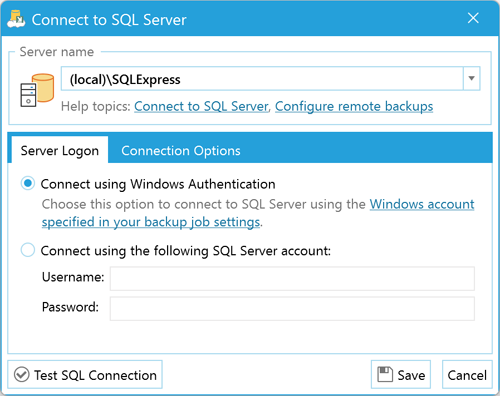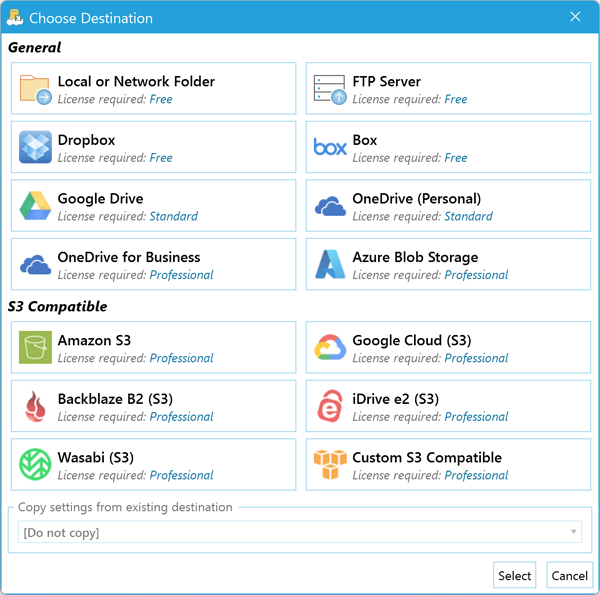Back Up SQL Databases to Backblaze
Looking for an easy way to back up SQL data to Backblaze? With SQL Backup Master and Backblaze B2 cloud storage, you can automate and secure your SQL Server backups in just a few steps. Follow the guide below to set up and run your backup job.
STEP 1 – Backblaze Account Setup
Go to the Backblaze B2 homepage and click the Sign Up button to create an account. You’ll only need to provide an email address and password to proceed. Once logged in, you’ll be ready to create storage buckets for your SQL backups.
STEP 2 – CONNECTING TO A SQL SERVER DATABASE
In SQL Backup Master, open the Backup and Restore window and select New Backup. When the Database Backup Editor window appears, click the Choose SQL Server tab to bring up the Connect to SQL Server window.

In the Server name field, type or select the name of the SQL Server instance you’re backing up. Examples include:
- (local)\SQLExpress – The default SQL Express named instance on the local computer.
- (local) – A local SQL Server installation (no instance name).
- Server1\SQLExpress – The default SQL Express named instance on a remote computer named “Server1.”
- Server1 – An unnamed SQL Server instance on a remote computer named “Server1.”
Use the drop-down arrow in the Server name field to automatically find local or remote SQL Server instances. Click Test SQL Connection to verify connectivity, then select OK.
STEP 3 – Select Databases to Back Up
After connecting, the Database Backup Editor window will list available databases under Source. Check the boxes for the databases you want to include in this backup job.
Enable Back up all non-system databases if you’d like new databases to be automatically added to future backups on this SQL Server.
STEP 4 – Add a Backblaze B2 Backup Destination
Click the Add icon under Destinations. A window listing possible backup destinations will appear:

Double-click Backblaze B2. The Backblaze B2 Destination Settings window will appear, prompting you to authorize SQL Backup Master’s connection to your Backblaze account. Enter your Access Key, Secret Key, and choose your Bucket. Use the Test button to confirm a successful connection.
Back at the Database Backup Editor window, click the Save icon to finalize your backup destination.
STEP 5 – RUN THE BACKUP
In the main SQL Backup Master window, locate your newly created backup job and click Back up now to begin sending your SQL backups to Backblaze B2.
If the backup job doesn’t complete successfully, review the application log file for error details or additional troubleshooting information.
That’s it! You are now backing up your SQL database to Backblaze. By automating backups with SQL Backup Master, you’ll have peace of mind knowing your critical data is protected offsite and readily available for recovery.
If you’re looking for additional backup destinations—such as Dropbox, OneDrive, or Amazon S3—be sure to explore the full feature set of SQL Backup Master by Key Metric Software.
